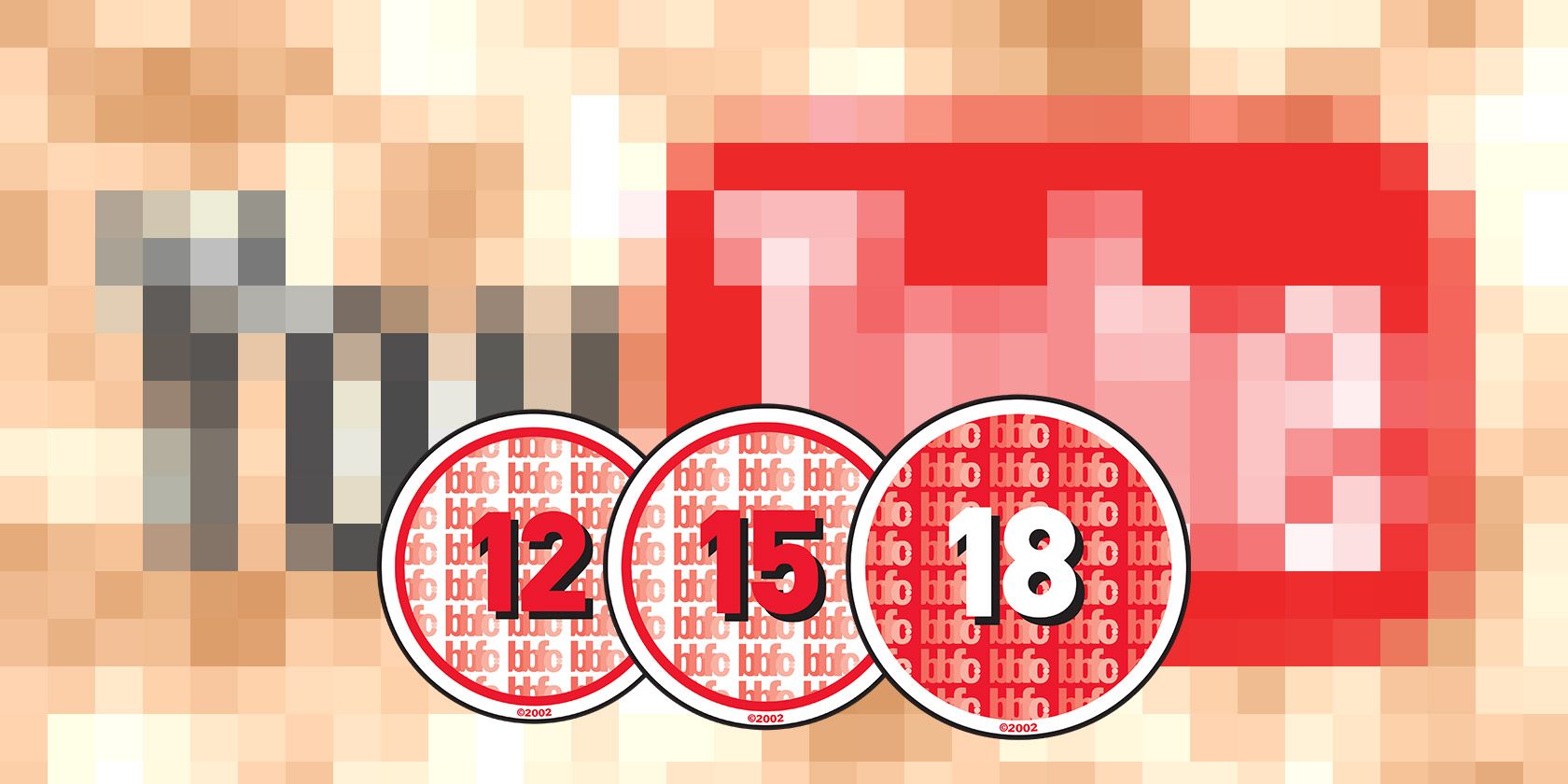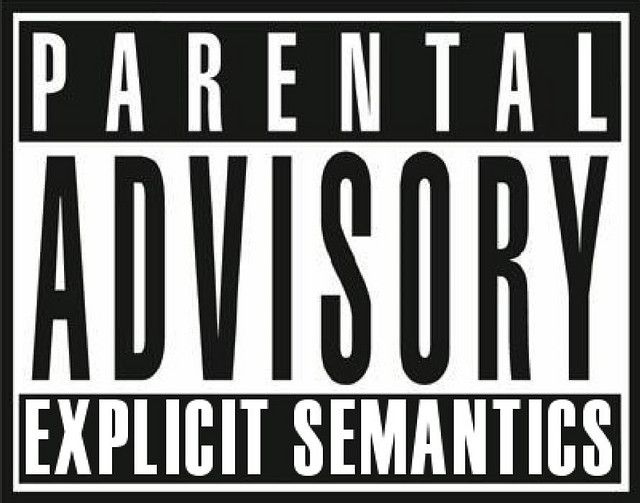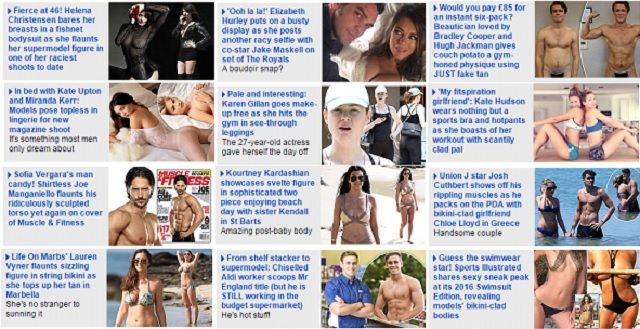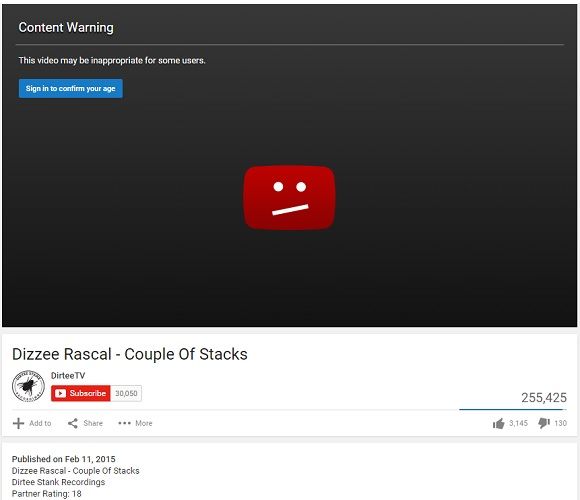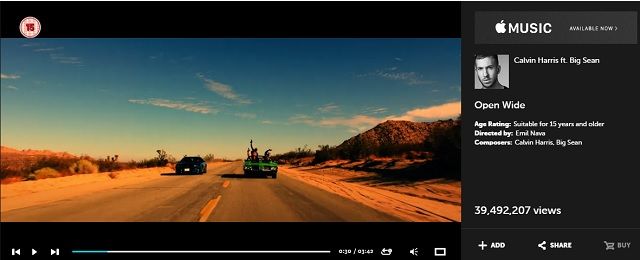Rihanna, Robin Thicke, and Miley Cyrus… there's little doubt that music videos have got more risqué in recent years, but is the British Government right to impose age ratings on music videos on YouTube and Vevo?
From now on, music videos produced in the UK and distributed by major brands will be subject to classifications if they're deemed unsuitable for children. Just like films, the ratings will be 12, 15, and 18.
What's the reasoning behind this move? Should this policy be rolled out internationally? And is it really worth instituting in the first place?
Uhm… Why?!
This program of censorship actually began with a pilot scheme in the UK last October, but will now become a permanent measure. It works by Warner Music, Sony Music, and Universal Music all volunteering their videos to the British Board of Film Classification (BBFC), which works alongside the music industry's UK trade association, the British Phonographic Industry (BPI).
According to Joanna Shields, Minister for Internet Safety and Security, it's all being done with responsibility in mind:
"Keeping children safe as they experience and enjoy all the benefits the internet has to offer is a key priority for this government’s one-nation approach to help families across Britain. We will continue to work with industry to develop ways to help parents to better protect children online from inappropriate music videos with explicit adult or violent content."
Remember when Helen Lovejoy begged, "won't somebody please think of the children"?
This has definite shades of that.
The policy affects any video featuring violence, nudity, sexual references, and swearing. So far, 132 videos have been fixed with labels: 56 being granted a 12; 53 a 15; and a sole Dizzee Rascal track, Couple of Stacks, being awarded an 18 certificate. This adults-only track features would-be lovers embracing before the rapper decides to go on a disturbing (almost farcical) killing spree. It's somewhat reminiscent of a more brutal Goosebumps, thanks to a bloody title screen and head-spinning action.
While some will accuse it of being merely the latest example of a "nanny state," it's hard to question the reasoning. After all, the BBFC already judges all movies and DVD releases, and most "adult" albums come with a "Parental Advisory" sticker somewhere on the cover.
The Most Controversial Videos?
We have come a long way since Mary Whitehouse scribbled endless notes to the BBC (British Broadcasting Corporation) and ITV (Independent Television) about dance troupe Pan's People on Top of the Pops, the Time Lord being strangled and held underwater in Doctor Who, and blasphemy in Son of Man.
Things really have changed. Strong language and sexualisation is everywhere. Just a quick glance at the infamous sidebar on The Daily Mail website reveals that newspapers certainly aren't exempt from objectifying men and (primarily) women.
The point is, where will it stop? What is considered going too far?
Madonna is known for her controversial videos – and lyrics – but you could argue that this NSFW (Not Suitable For Work) attitude has increased recently. Here are just a few music videos that raised pulses upon release…
Blurred Lines
https://www.anrdoezrs.net/links/7251228/type/dlg/sid/UUmuoUeUpU51777/https://vimeo.com/73327481
In 2013, you couldn't turn on the radio without hearing this collaboration between Robin Thicke, T.I., and Pharrell Williams. And then student unions began to ban it.
It quickly became known for seemingly advocating rape (naturally, the artists protested about this assertion), but two videos were also released, one sexualized but still relatively clean, and the other starring Emily Ratajkowski, Elle Evans, and Jessi M'Bengue dancing topless. It was removed from YouTube for its nudity, but was soon put back up with an age warning. We're not showing the uncut version in case you're at work. Aren't we thoughtful?!
Elastic Heart
Sia trod the line between art and paedophilia in this oddity of a music video, released at the start of 2015. Sia apologised on Twitter after many were offended. The film depicts an almost-animalistic dance-fight mash-up in a cage, which some people felt hinted at something untoward (perhaps even incest). Others defended it as High Art that people simply don't understand.
A warning to anyone easily offended: this video contains scenes of a Shia LaBeouf nature.
Call on Me
If you're a heterosexual male, it's pretty hard to forget this 2004 chart-topper, which combined a repetitive beat, and highly suggestive aerobics performed largely by skimpily-clad women. Then-Prime Minister Tony Blair famously said:
"The first time it came on, I nearly fell off my rowing machine."
Hey, we've all been there. Indeed, it became the highest-downloaded music video in Australia, and even prompted a follow-up workout DVD. An uncut version featuring an even more suggestive routine didn't save it from being named #5 on NME magazine's 50 Worst Music Videos Ever list.
All the Things She Said
Despite being labelled as gimmicky, All the Things She Said thrust Russian artists, t.A.t.U, into the international spotlight. The music video, perhaps considered tame by today's standards (despite only being released in 2002), played a large part in this, as it focused on a seemingly lesbian relationship and the public's shocked reaction to this.
Despite being marketed as such, Julia Volkova and Lena Katina weren't lesbians, although both advocate LGBT rights (and recently performed at last year's Winter Olympics Opening Ceremony in Sochi).
Here's Why Age Ratings Won't Work
I haven't even mentioned Katy Perry lying naked on a cloud, Miley Cyrus wrecking her Hannah Montana persona by riding a wrecking ball, or Rihanna's admission that chains and whips excite her.
This reveals the core problem with putting age ratings on music videos produced in the UK: it might be a start, but as it's only confined to UK artists it will have little effect. This means that Nicki Minaj can be as explicit as she likes, and the BBFC still won't shove an 18 certificate on her Anaconda. Even Baroness Shields admits:
"I don't think anybody believes for a second that we're going to solve this completely with this scheme. The Internet has no borders and the UK can't solve these problems alone."
Many merely see this as another way the Government is aiming to censor or at least manipulate its citizens by saying it's seeking to protect children. Previously, Prime Minister David Cameron forced Internet Service Providers (ISPs) to offer its customers the chance to block websites en-masse. Is it the duty of the state to "protect" its youth, or the responsibility of parents? And then there's the debate as to whether parents should keep an eye on their kids' online activities.
This is ignoring another reason these ratings are moot: it's really not censorship at all. Pop over to Couple of Stacks on YouTube and try to find the 18 certificate. If you're there to see Dizzee rip out a girl's heart, you probably won't stop to look for details of when it was published and by whom – which is where you'll find the age-restricted detail. On Vevo, videos play automatically, a rating is to the right, and a certificate flashes on screen at the top left when you hover over it. You'll be lucky if you even notice.
YouTube has been doing a better job for years: they already display a content warning, so you can only watch certain material if you sign in and confirm your age. (Even then, mankind has invented a handy little thing called lying, afforded to us online thanks to Internet anonymity.) Scroll down and see the bad language in the comments too: on these sorts of videos, you typically get more effing and blinding than you would watching Danny Dyer guest on a chat show.
Of course, a preteen might be annoyed that he or she can't watch a particular video on YouTube, and that same preteen might also know to check out alternatives like Vimeo or Dailymotion. The age ratings aren't universal either geographically or even across the Internet! YouTube may be the most popular of these online video sites, but it's far from being the only one.
If you're determined enough to see something, you can usually find a way to do so, normally pretty quickly when online. An insubstantial warning won't make a difference, just as the 15 rating didn't stop me watching Die Hard when I was half that age. Yippee-ki-yay, motherfluffer, indeed.
Making a Difference
I'm not a parent. I'm not especially qualified to report on the negative effects of finding another individual attractive. Children hear swear words erupting across a school yard. And with regards to violence, it's that old argument again about whether video games inspire kids to kick off.
However, I do see the need to protect the innocence of youth. It's important they're not tainted by the adult world. It's a precious time in anyone's life. Then again, you can enjoy a Disney movie and still find Katy Perry strangely mesmerizing.
In conclusion, I personally don't think this is the right way to achieve mollification. In fact, it won't achieve anything, as far as I can see. It's certainly not going to stop Rihanna from releasing scandalous songs: after all, as Marge Simpson says, "snuggling sells"!
What's Your Opinion?
Do age ratings make any difference to you? Are you concerned about the effects increasingly outrageous music videos will have on children? Have you got a better solution to the problem that assigning age ratings? Please let us know your thoughts in the comments section below.
Image Credits: Parental Advisory by Duncan Hull

